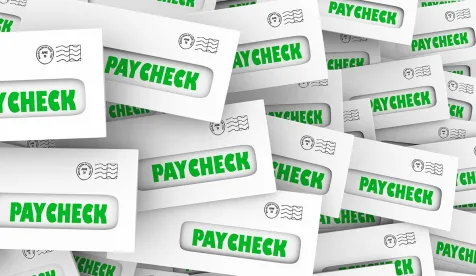In Notice 2020-50, the IRS expanded eligibility for CARES Act distributions and loans, and provided additional guidance. To recap (as described here), the Coronavirus Aid, Relief, and Economic Security Act (the “CARES Act”) added three types of distribution and loan flexibility under eligible retirement plans for certain “qualified individuals”: (1) “coronavirus-related distributions” (“CRDs”) up to $100,000 that are eligible for favorable tax treatment and generally may be repaid to the plan or an IRA within 3 years, (2) suspension for up to one year of loan repayments otherwise due from March 27, 2020, through December 31, 2020, and (3) increased loan limits. In May FAQs, the IRS made clear that these provisions are optional.
The CRDs and expanded loan opportunities are available only for “qualified individuals” who are diagnosed, or have a spouse or dependent who is diagnosed, with SARS-CoV-2 or COVID-19, or who otherwise experience “adverse financial consequences” due to various coronavirus-related circumstances. The qualifying circumstances under the CARES Act statute included things like being furloughed or having hours reduced but did not include a reduction of pay. Notice 2020-50 expands the list of qualifying circumstances to include the following:
-
Having a reduction in pay or self-employment income;
-
Having a job offer rescinded or a start date delayed;
-
Having a spouse or household member who experiences the consequences described above, or who is quarantined, furloughed or laid off, has hours reduced, or is unable to work due to lack of childcare caused by COVID-19; or
-
Experiencing a closing or reduction of hours of a business owned by the participant’s spouse or a household member.
In addition to expanding eligibility for CRDs and the CARES Act loan relief, the Notice includes the following guidance:
-
Elaborates on the ability to designate distributions as CRDs even if the plan does not have CRD provisions. Qualified individuals may designate as CRDs any distributions of up to $100,000 from “eligible retirement plans” that are made on or after January 1, 2020, and before December 31, 2020—even if the plan has not adopted CRDs. This includes, for example, periodic payments previously made for minimum required distributions as well as payments received as a beneficiary and offsets to repay qualifying plan loans. However, corrective distributions, dividends on employer securities, and certain similar distributions are not eligible. Also, as discussed here, money purchase and defined benefit pension plans are not “eligible retirement plans;” so distributions from those plans are not eligible for CRD treatment.
-
Not all CRDs may be repaid. A CRD may be repaid to the plan or an IRA only if it is eligible for tax-free rollover treatment. Accordingly, CRDs paid to a non-spouse beneficiary cannot be repaid.
-
Details the individual tax consequences of taking or repaying a CRD. The guidance describes logistics for including CRDs in income ratably over three years and for repaying the CRD. Because income inclusion for CRDs is delayed, it is possible to repay CRDs before they are ever subject to income tax. But if a qualified individual repays a CRD after having filed his or her tax return, the individual would have to restate his or her tax return to get full tax-free rollover treatment.
-
Elaborates on withholding and reporting for CRDs. The Notice states that CRDs are not subject to the rules for eligible rollover distributions. This means that the plan does not have to offer a rollover for a CRD, and CRDs are subject only to voluntary withholding. The Notice gives flexibility for reporting CRDs on Form 1099-R: they can be reported with distribution code 2 (to note an exception from the 10% additional tax on early distributions) or code 1 (early distribution, no known exception). Regardless of how the plan reports the CRD, it is the recipient’s responsibility to manage the $100,000 limit on an aggregate basis (counting distributions from multiple plans, if applicable).
-
Provides self-certification language for an individual to claim eligibility for a CRD or loan. The Notice reiterates that plan administrators may rely on individual self-certification of eligibility for a CRD or CARES Act loan, unless the administrator “actual knowledge” to the contrary. The Notice includes language that can be used for this self-certification.
-
Provides a safe harbor for reamortizing loans after a suspension. For all plans, loan repayments must resume by January 2021. The Notice recognizes that there can be more than one reasonable way to reamortize the loan when payments restart. The safe harbor allows substantially equal payments over the remainder of the original loan term plus up to one year.
-
Coordination with non-qualified deferrals. The notice allows a nonqualified deferred compensation plan to treat a CRD like a hardship withdrawal for purposes of canceling deferral elections mid-year.





 />i
/>i
